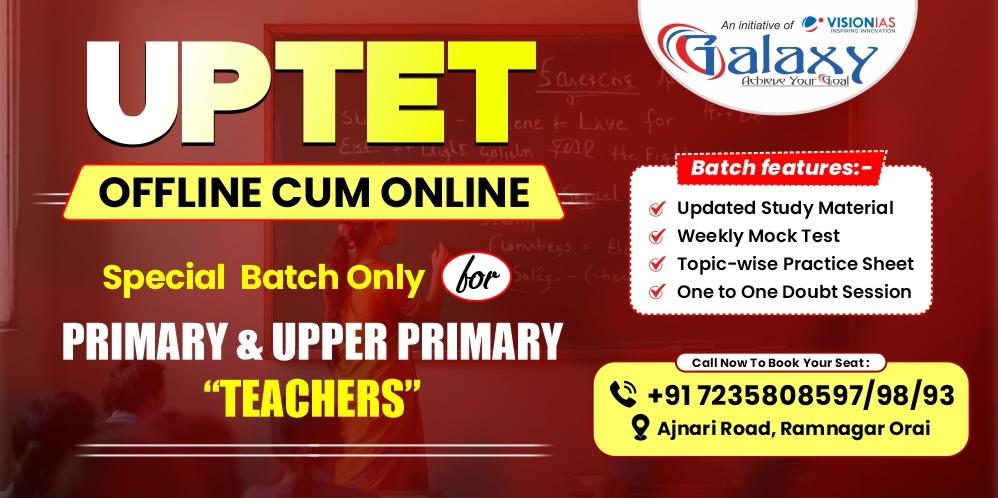13 October, 2025
Goa Achieves 100% Literacy under 'ULLAS – Nav Bharat Saaksharta Karyakram'
Sat 31 May, 2025
Context:
- On its 39th Statehood Day on 30 May 2025, Goa achieved the target of 100% literacy under the ‘ULLAS – Nav Bharat Saaksharta Karyakram’ (ULLAS).
Key Points:
- This achievement makes Goa the second fully literate state in the country after Mizoram.
- Realizing the vision of the National Education Policy (NEP) 2020, Goa not only surpassed the national benchmark of 95% but also focused on all aspects of functional literacy, including reading, writing, and numeracy.
Strategy and Implementation:
- Whole-of-Government Approach: The Goa government ensured identification and outreach of illiterate individuals through coordination among departments like Panchayati Raj, Urban Administration, Social Welfare, Planning & Statistics, Women & Child Development.
- Role of Volunteers: Swayampurna Mitras and field workers played a crucial role in door-to-door identification, enrollment of illiterates, and helping them obtain literacy certificates.
- Awareness Campaigns: Awareness drives were conducted to highlight the importance of literacy in society, which boosted community participation and adult education.
Program Features:
- ULLAS Program: A central government initiative aiming to achieve 100% literacy across India by 2030.
- Functional Literacy: Emphasis was placed not only on reading and writing but also on essential numeracy and practical knowledge needed for daily life.
- Literacy Rate: Goa claimed 100% literacy based on its internal survey, whereas the PLFS 2023–24 reported a literacy rate of 93.6%. This difference is attributed to state government efforts and central recognition.
Social and Policy Impact:
- Role Model: Goa’s achievement serves as inspiration for policymakers and other states, demonstrating that strong political will, administrative coordination, and community involvement can lead to high literacy goals.
- Inclusive Development: Participation of women, marginalized, and rural communities promoted social inclusion.
- Impact of NEP 2020: Special emphasis on adult education, lifelong learning, and life skills under NEP 2020 was effectively implemented at the grassroots level in Goa.
‘ULLAS – Nav Bharat Saaksharta Karyakram’:
- A centrally sponsored scheme.
- Implemented by the Government of India for the period 2022–2027.
- Aligned with the National Education Policy 2020.
- Aims to make adults aged 15 years and above, who missed formal schooling, literate.
Primary Objectives:
- Provide Foundational Literacy & Numeracy.
- Impart Critical Life Skills: Financial, digital, health, child care, family welfare, etc.
- Basic Education: Primary, secondary, or equivalent levels.
- Vocational Skills Development: For local employment opportunities.
- Continuing Education: Courses for adults in arts, science, technology, culture, sports, etc.
Key Implementation Points:
- Volunteer-based Model: Implemented through volunteers who guide and train learners.
- Digital Platforms: Online registration, learning, and assessment via ‘ULLAS’ mobile app, DIKSHA portal, and other digital tools.
- Certification: Literacy certificates jointly issued by NIOS and DSEL.
- Target: To make 5 crore (50 million) adults literate during 2022–27 (1 crore per year).
- Financial Outlay: ₹1037.90 crore (Centre: ₹700 crore, State: ₹337.90 crore).
Features:
- Inclusivity: Covers illiterates aged 15 and above in all states/UTs.
- Social Responsibility: Promotes a sense of ‘Kartavya Bodh’ (sense of duty) and community participation.
- • Continuous Progress: Digital certificates for learners and educators encourage confidence and lifelong learning.
National Education Policy 2020 (NEP 2020):
Introduction:
- Announced by the Government of India on 29 July 2020.
- The first comprehensive education reform since the 1986 policy.
- Aims to make India a global knowledge superpower and reshape education to be inclusive, holistic, flexible, and suitable for 21st-century needs.
Main Goals:
- Achieve 100% Gross Enrolment Ratio (GER) by 2030.
- Ensure public expenditure on education reaches 6% of GDP.
- Provide quality, inclusive, and equitable education for all.
- Emphasize the holistic development of students – physical, mental, social, moral.
- Promote technical, vocational, and skill-based education.
Key Features:
| Sector | Features |
| School Education |
- 5+3+3+4 structure (for ages 3–18) - Emphasis on mother tongue/local language up to class 5 - Focus on Early Childhood Care and Education (ECCE) - Reduce dropout rates and ensure universal access to education |
| Higher Education |
- 3- or 4-year undergraduate programs with certificate/diploma options - Single regulatory body under HECI - Promotion of research and innovation |
| Language Policy - Three-language formula |
- At least two Indian languages mandatory - Preference for the mother tongue Teacher Training - Improved training and evaluation systems - Emphasis on teacher qualification and capacity building |
| Other Initiatives - Digital education, virtual labs, tech integration |
- Vocational education from school level - Special provisions for inclusive and equitable education |
Structure (5+3+3+4):
- 5 Years: Foundational Stage (3 years pre-primary + Classes 1–2)
- 3 Years: Preparatory Stage (Classes 3–5)
- 3 Years: Middle Stage (Classes 6–8)
- 4 Years: Secondary Stage (Classes 9–12)
Mizoram’s Literacy Rate:
- In 2025, Mizoram became India’s first “Fully Literate State” with a literacy rate of 98.2%.
- This achievement came after surpassing the 95% benchmark set by the Ministry of Education.
- According to the PLFS 2023–24 survey, Mizoram's literacy rate was recorded at 98.2%.
- As per Census 2011, the state's literacy rate was 91.33%, which has now risen significantly.
- Mizoram overtook states like Kerala and Tripura to attain this position.
- Under the ULLAS – Nav Bharat Saaksharta Karyakram, the state focused on adult education, functional literacy, and digital and financial literacy.
- The definition of literacy now includes not just reading and writing, but also comprehension, numeracy, digital, and life skills.
- The Mizoram government is now taking new steps towards digital literacy and continuing education.
Note:
Kerala had consistently maintained the highest literacy rate (93.91%) based on the 2011 Census and later estimates. However, Mizoram surpassed Kerala in 2025.


















